How to make a beautiful gazebo from pallets: ideas, photos, step-by-step instructions
There are many options for using old pallets. You can build a lot of interesting things from them.But the most successful idea is to make a summerhouse from pallets. A small building measuring 2x3 m will be enough to take a break from gardening chores and caring for beds.
The content of the article:
Pros and cons of pallets as a building material
Before starting construction, you need to evaluate the capabilities and real effect of using pallets. There are three options for building a gazebo from wooden pallets:
- Use intact but used Euro pallets. Typically, old pallets with a certain service life are discarded and thrown away for firewood.
- Build from new Euro pallets. They are inexpensive, but it is unlikely that they can be begged in sufficient quantities from a construction or forwarding organization.
- Stock up on any pallets, the main thing is that their number is sufficient to build a gazebo. In this case, the pallets are disassembled into boards and timber.
From used pallets you can build a small gazebo for the garden or country beds. There is no need to count on anything more. It is almost impossible to make a beautiful and modern building from old “firewood”, and the service life of such a structure will be short.
You can build a gazebo from new pallets. This is possible, but only if you can buy the material at a low price, preferably below cost.Otherwise, it will be more profitable to buy an ordinary beam, board, batten and build a gazebo in a classic style. Moreover, its appearance will be much more attractive than a building made from pallets.
The third option is to disassemble the existing stock of Euro pallets (old and new) into boards and bars. New material is used on the front areas of the gazebo, old timber and boards are used in places where it is hidden from view. Such a scheme also exists; it is used to build small gazebos.
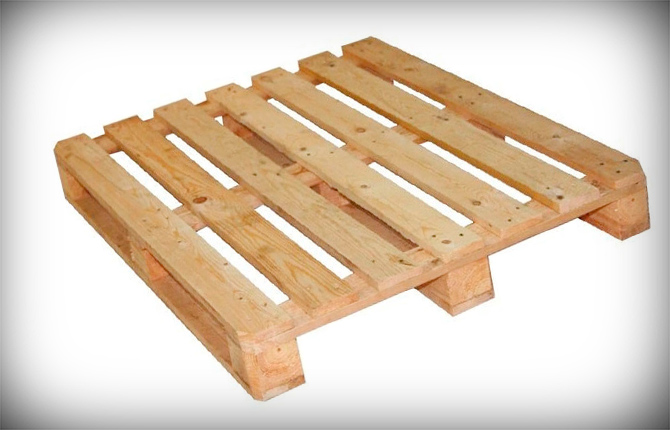
Disadvantages of using Euro pallets
Wooden Euro pallets have two important disadvantages. Firstly, the size of the boards and timber is limited by the dimensions of the pallets. This means that when building a gazebo, you will have to splice individual pieces to get a long enough piece. Moreover, the experience is not always successful. For example, it is better to make roof racks for a large gazebo from solid timber.
In some projects, the supports for holding the roof are knocked together from halves of pallets. The result is a rather bulky but reliable design.
Secondly, the wood of the pallets undergoes special processing. As a rule, these are salts of nickel, chromium, iron, and some organic materials. The treatment makes the wood resistant to bark beetles, fungus, and water and machine oil. The design and scheme of using pallets in transport provide for the use of forklifts, that is, people’s hands should not touch the pallet.
Therefore, during the construction of the gazebo, it is necessary to use gloves, and upon completion, it is necessary to open the wood with high-quality varnish.
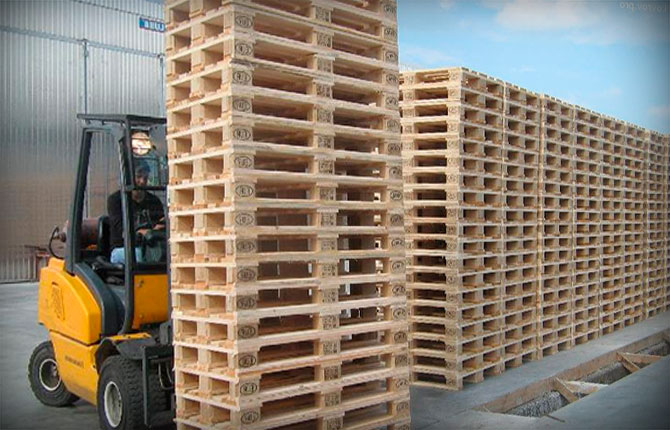
Benefits of using pallets
The wood used in Euro pallets is of fairly high quality. There are practically no knots or damaged areas.The material is of sufficient thickness, easy to cut, drill, and absorbs varnish and paint well.
Therefore, if you choose the right gazebo design and lay the foundation well, the building will last for decades, even if it is a place to relax somewhere in the garden beds.
Another plus is that the size and shape of a standard pallet are very convenient for forming a floor, podium or flat roof frame. All that is required is to knock the pallets together at the end, and you will have a ready-made recreation area. The gaps between the boards are easily sewn up with boards from other pallets disassembled into parts.
New Euro pallets can be used to make a complete site fencing. To do this, the pallets are placed on the end and joined together with jumpers and wooden overlays.
Pallets can be used as children's construction blocks. If you arrange the details correctly, you can achieve a very attractive design.
But still, the roof, vertical posts, and rafter elements will need to be made from solid timber and boards.
Preparation for construction
Before building a gazebo out of pallets, you need to gain at least a little experience in handling pallets. Despite the standard design of wooden packaging, there are no uniform requirements for the manufacture of Euro pallets. There is only a set maximum cargo weight - 1500 kg for the Euro model and 2500 kg for Finnish pallets.
Pallet sizes:
- Euro version - 120x80 cm, height - 14.5 cm. Board - 22 mm, two types of timber - 145x100 mm, 78x78 mm.
- Finnish - 120x100 cm, height - 14.4 cm. Support beam - 100x100 mm, board - 22 mm.
You can also find Russian-made pallets. Some of them are made according to the Finnish model, but more according to the standard for Euro pallets.To avoid mistakes, you need to look at the mark on the wood itself. Repaired pallets are often found; some broken boards can be replaced with substandard material.
Where to get the material
Pallets can be purchased directly from carriers. Many goods are unloaded from pallets directly at the warehouse gates, and often even from the side of the truck. Therefore, many drivers take the containers to a secluded place, from where the pallets are sold to everyone.
If you are building a formal gazebo with additional decorative trim, you need to be patient. In about a month you can collect the required number of good quality pallets. In terms of money, it will be half the price than buying a batch of new ones. Moreover, for a simple gazebo you won’t need a lot of material.
Often transport organizations simply throw away old pallets. According to the instructions, they are not allowed for transportation, even if one board is broken. When disassembled, they are used either for nothing or for firewood for next to nothing. Here you can also choose pallets in satisfactory condition.
Project
Now you need to decide on the appearance and structure of the gazebo. From pallets, even the highest quality ones, there is no point in building full-size gazebos 4x4 m or 4x5 m with a ceiling of 250-300 cm. The problem is that each pallet is a couple of dozen parts nailed together into one structure.
The rigidity of the gazebo depends on the number of connections (hammered nails, joints, splice points). The more, the more shaky the building frame will be. Therefore, all more or less successful projects are gazebos measuring 2x3 m, 3x3 m, and with rare exceptions 3x4 m.
Successful projects include low, compact structures assembled from Euro pallets with additional reinforcement of joints.Often, to increase the strength of the racks with the walls of the gazebo, the pallets are sheathed with planks and timber.
- For example, a version of a gazebo for children in the shape of a house.
- Or a project for a small open-type gazebo-canopy.
- An option for a closed gazebo for evening gatherings at the dacha.
A selection of gazebos made from other materials:
- DIY gazebos made of wood.
- We build a gazebo from polycarbonate with our own hands.
- How to build a comfortable metal gazebo with your own hands.
- We build a modern gazebo with a barbecue for the dacha with our own hands.
- How to make a gazebo from a profile pipe with your own hands.
- Do-it-yourself gazebo with a pitched roof.
- We make a gazebo from scrap materials with our own hands.
Drawing
For the first experience, it is best to build a gazebo for a summer house from parts (boards, beams) from disassembled pallets. For the lower part of the building, you can use several whole pallets laid on the foundation.
Racks, fencing, furniture elements (benches) and decoration can be made from timber and planks. Therefore, part of the whole, strongest pallets will be used to build the base of the gazebo. The rest will have to be disassembled into boards and timber.
How to properly disassemble a pallet
Disassembling an entire pallet into parts takes from 10 to 20 minutes, depending on the condition of the fasteners. The longer the pallet has served, the more difficult it is to disassemble it without breaking the board.
For disassembly, you will need a special tool for recycling formwork, wooden scaffolding, containers, including transport pallets. It is similar in shape to a classic carpenter's nail puller, but differs in its larger size, increased width of the antennae and huge lever.
All that is required is to lay the pallet on a flat surface, press it with your foot to the surface, use a nail puller to pry the board in the center and slightly lift the nail. If the pallet is machine assembled, the fasteners will come out quickly. During mechanized assembly, the nails are coated with some kind of compound like soap or paraffin. The machine hammers nails into the board very quickly, but the wood does not split.
If the pallets are handmade, then the nail may “stick.” In this case, carefully drive a wedge under the board from the sides (possible) and repeat the procedure. As a rule, the second or third time the nail comes out without breaking the board.
The fasteners removed from the pallet need to be aligned and saved; they will be useful when building a gazebo. The quality of the nails is better than those sold in construction stores.
Boards and timber are sorted and rejected. Material with cracks is sent for firewood. The rest is dried and treated with drying oil or varnish.
Installation of a columnar foundation
The wooden frame of the gazebo requires protection from moisture. The roof, posts, and fencing are usually well ventilated, so even if it rains or snows, this part of the gazebo will not suffer. The lower frame and the floor of the building find themselves in a more difficult position. Even if the soil appears dry, prolonged contact of the soil with the pallets can cause swelling and subsequent cracking of the wood.
You can try to install the gazebo on waterproofing made of film or roofing felt. But this solution does not improve the ventilation of the lower trim, so the water remains. This means that it is necessary to place the gazebo on a foundation, for example, on a columnar foundation. It is the easiest to manufacture.
For a wooden gazebo 2x2.5 m, you can install poles in an hour of work.
Construction of the foundation:
- Initially, it is necessary to mark and plan the site. Remove the top layer of soil to a depth of 15 cm.
- Next, you will need to fill the area with a mixture of wet clay and gravel. A layer 2-3 cm thick. Compact the entire surface and fill it again, but with sand and gravel.
- Cinder blocks 20x25x45 cm, laid on their sides, will be used as pillars. The foundation will require 9 blocks. In order not to make a mistake with the location of the pillars, you need to lay a couple of pallets on top. The corner of the post should coincide with the edge of the pallet.
After installing the supports, it is necessary to fill the area with soil and compact it. It is enough if the supports protrude 50-70 mm above the soil.
Frame and floor
This gazebo design does not have a lower or upper frame. The lower base is formed from four pallets (necessarily new), inverted and laid on support posts.
Next, you will need to check the position of all pallets. If some edge “hangs” in the air, then a small board adjusted to its thickness is driven into the gap. The gasket must be secured to the pallet with a self-tapping screw.
After assembling the lower base, the pallets need to be knocked together. The width of Euro pallets is sewn together using short boards stacked on adjacent boards; 8 pieces will be enough.
Another long board (160 cm) is placed on top of the pallet across the entire width. You will need 3 of these boards. In addition, the pallets are sewn together by stuffing boards at the front and side ends.
Important! All other assembly operations for building a gazebo are performed using a screwdriver and black carpentry screws.
Next you will need to assemble and install the frame of the gazebo. Unlike other projects, in this design the walls and roof rafters are pre-assembled as a pre-fabricated part, resembling the letter “P”.
Each such part consists of:
- Two vertical posts, each assembled in advance from three boards fastened with self-tapping screws. At the top and bottom of the rack, leave a plank overhang of 100 mm. With the help of an extension, the stand will be attached to a pair of rafters or to the base of the gazebo.
- Pairs of rafters, each of two boards 100 cm, the parts are sewn together with a piece of board.
To form the frame of a gazebo of such structures you will need three pieces. Moreover, they must be completely identical in size and angles. Before installation on the base, the U-shaped frame is temporarily filled with spacers, after which it is carried with an assistant to the installation site.
The frame needs to be aligned vertically and fixed at the bottom; for each rack you will need to screw two struts.
Important! In the absence of assistants, assembly can be done in parts. First, install each vertical post separately and secure it with struts. Then raise and install three pairs of rafters one by one.
Once all three U-shaped frames are installed and fixed, you will need to fill horizontal boards 120x25 mm, 4 pieces of 2.5 m each. They will securely hold the frame while the roof of the gazebo is assembled. Boards will have to be purchased separately.
Before moving on to the roof, you need to sew up the floor of the gazebo with the remaining plank. This and subsequent operations are performed using a hammer and nails.
Roof and wall cladding
Now you need to make a sheathing for the roof of the gazebo. To do this, you will need to “pull” the smoothest boards from the disassembled pallets, connect them together so that each one has a length of at least 220 cm. You will need 20-25 pieces. The width of the workpiece is not important, since the roof overhangs will be covered with slats.
Several types of material can be used as a roofing covering for a gazebo:
- Glass ruberoid. It is enough to coat the outer surface of the sheathing with white spirit and roll the panel, heating the wood and resin with a blowtorch. If you do it quickly, the roof of the gazebo will not catch fire, and the roof will be quite durable.
- Metal sheet. A galvanized sheet of 0.5 mm is cut to size. Allowances of 150 mm are made at the edges, from which the gutters can then be bent. The roof is attached to the roof of the gazebo with ordinary nails.
- Profiled sheeting. It is enough to cut the workpiece, bend it at an angle and lay it on the gazebo. But you will need to lay a film under the sheet.
All that remains is the wall cladding and furniture. First of all, you need to make a bench. Horizontal crossbar boards will be used as the backrest. You will only need to stuff “window sill” strips between the posts - 4 pieces.
Stringer supports for the bench are assembled from two scraps left over from disassembling the pallets. They are knocked down at an angle and screwed with self-tapping screws to the vertical posts from the inside. The bench itself can be made from two 200x25 mm boards.
The last thing to do is to line the walls of the gazebo along the bottom of the frame. It is sewn up with a vertical plank. The opposite entrance can be blocked with plywood.
Decorative finishing
Now is the stage that everyone forgets about. All wooden surfaces inside the gazebo, except the floor, must be thoroughly sanded with sandpaper. You can do it by hand, but it’s better to use an electric sander with a round attachment. Since the impregnating solution used to treat the pallets penetrates to a depth of up to 1 mm, you need to work with gloves, work clothes, goggles and a respirator. You can't breathe this dust.
Upon completion of sanding, wash the wood thoroughly with a clean, damp cloth. In the summer, if the gazebo is well blown by the wind, the tree will dry in 6-7 hours. After this, you can varnish or paint.
Sometimes gazebo owners paint all surfaces of the gazebo with plain paint. It doesn't turn out very nice. It is much better to coat the wood with varnish. Moreover, the wood from which pallets are made always has an even texture and grain pattern. If you get a stain, you can remove it with the help of “Whiteness”. True, the entire board will need to be processed.
Results
Building a gazebo from pallets with your own hands is no more difficult than from any other material. It will be more difficult to make the design truly expressive, but for such buildings this is not necessary. You can limit yourself to a simple design in a country “country” style.
Tell us about your experience in making gazebos and canopies from pallets. What material features should be taken into account when choosing a project? Write a comment, save the article to bookmarks and share it on social networks.
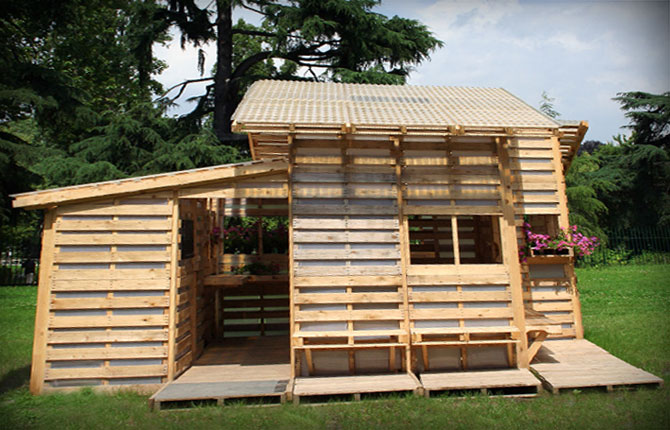

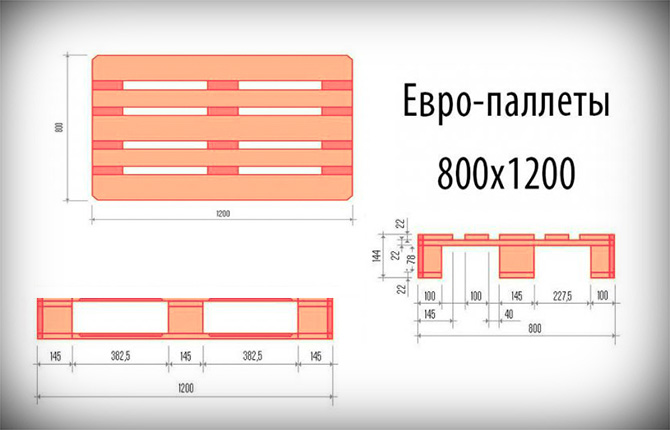
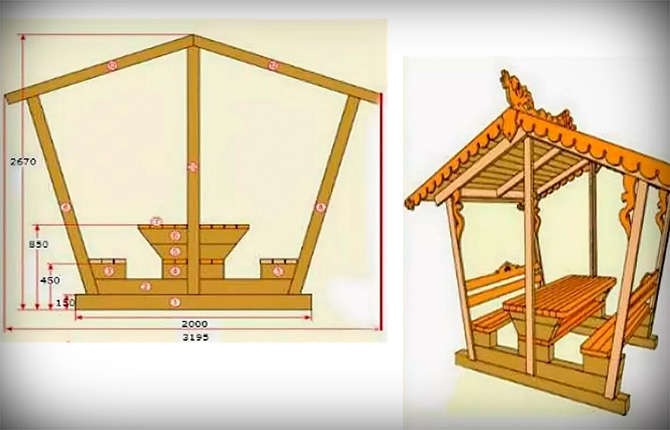
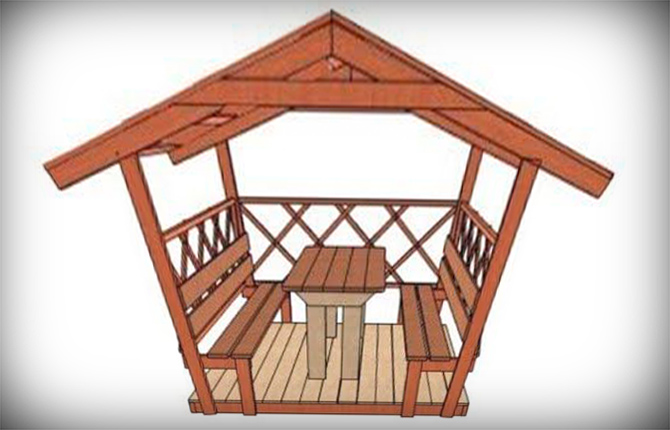
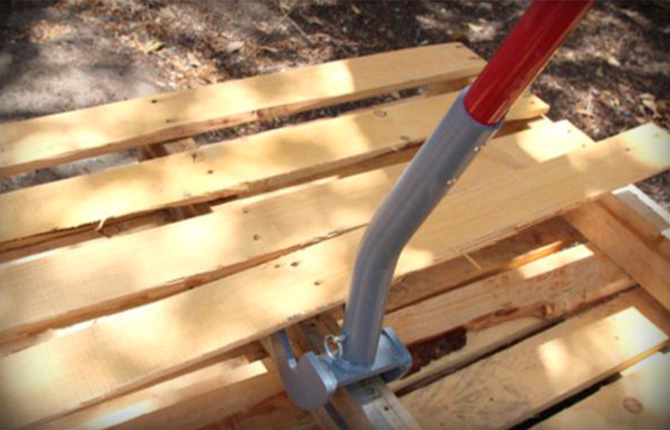
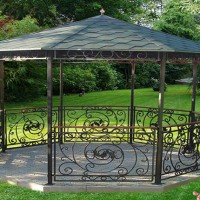
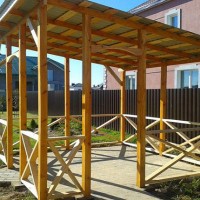
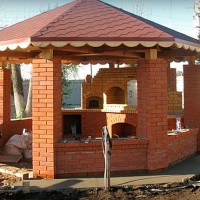







The gazebo is so-so, but sturdy. You need to sew up one side with a strip or stretch the film. If it rains, everything will be wet.Then what is the point of the gazebo.
It would be suitable for a summer residence, but in general such gazebos are built from a solid pallet. Those made of boards usually bend to one side from the wind. But the idea is cool